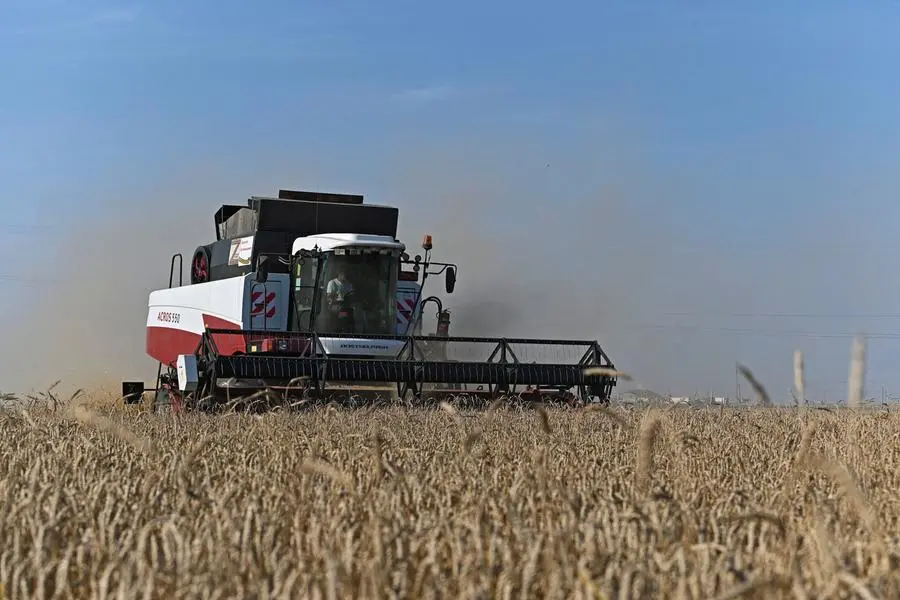PHOTO
FILE PHOTO: A combine harvests wheat in a field in the Rostov Region, Russia July 18, 2023. REUTERS/Sergey Pivovarov/File Photo Image used for illustrative purpose.
CANBERRA - Chicago wheat futures regained some ground on Tuesday after an easing of fears over supply from the Black Sea region triggered profit-taking in the previous session and pulled prices down from near three-month highs.
Corn and soybean futures were little changed as the United States ramps up what are expected to be bumper harvests, cementing expectations of plentiful supply.
The most active wheat contract on the Chicago Board of Trade (CBOT) was up 0.6% at $5.82 a bushel by 0701 GMT, while CBOT corn edged 0.1% higher to $4.11-1/4 a bushel and soybeans were flat at $10.04-3/4 a bushel.
Ample supply drove all three contracts to four-year lows in recent weeks but prices have recovered a little ground.
Wheat rallied to $5.99 on Friday, its highest since June 19, driven by crop losses in Europe, dry weather in Russia and Ukraine, a weak U.S. dollar and a missile attack on a grain vessel in the Black Sea that Kyiv blamed on Moscow.
However, the absence of further escalation between Ukraine and Russia and confirmation that large amounts of wheat continue to flow from Russian and Ukrainian ports have tempered concerns, with prices falling 2.7% on Monday.
"The main driver higher is dry weather in Ukraine and Russia heading into winter planting," said Commonwealth Bank analyst Dennis Voznesenski, adding that speculators had reduced their bearish position in wheat.
Wheat ending stocks in major exporting nations are expected to fall to multi-year lows at the end of the current season and CBOT futures should trade between $5.70 and $6.40 a bushel over the next few quarters, Voznesenski said.
"We expect prices to move higher."
In other crops, the USDA said the U.S. corn harvest was 9% complete by Sunday and the soybean harvest was 6% complete, both 3 percentage points ahead of their five-year averages.
The USDA rated 65% of the U.S. corn crop as "good-to-excellent", up 1 percentage point from a week ago and above analysts' estimates, and 64% of the soybean crop as "good-to-excellent", down 1 percentage point from last week and matching expectations.
The condition ratings are the highest for this time of year since 2018, underscoring expectations for large harvests.
The U.S. soybean crush dropped below all trade estimates in August to the lowest point for a single month in nearly three years, National Oilseed Processors Association data released on Monday showed.
(Reporting by Peter Hobson; Editing by Sherry Jacob-Phillips and Eileen Soreng)























